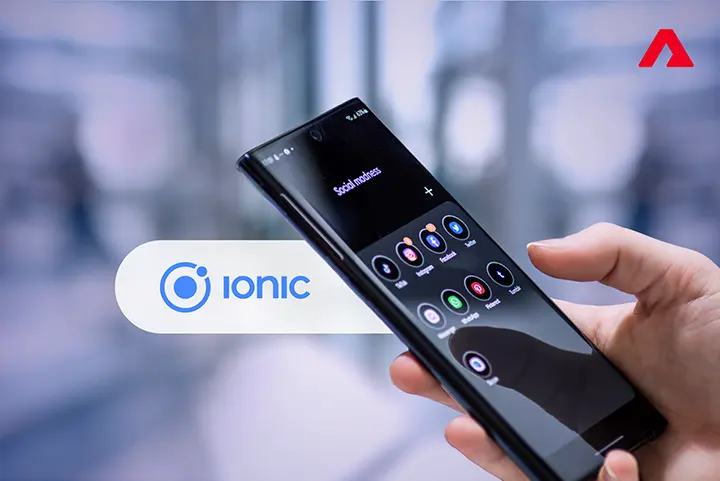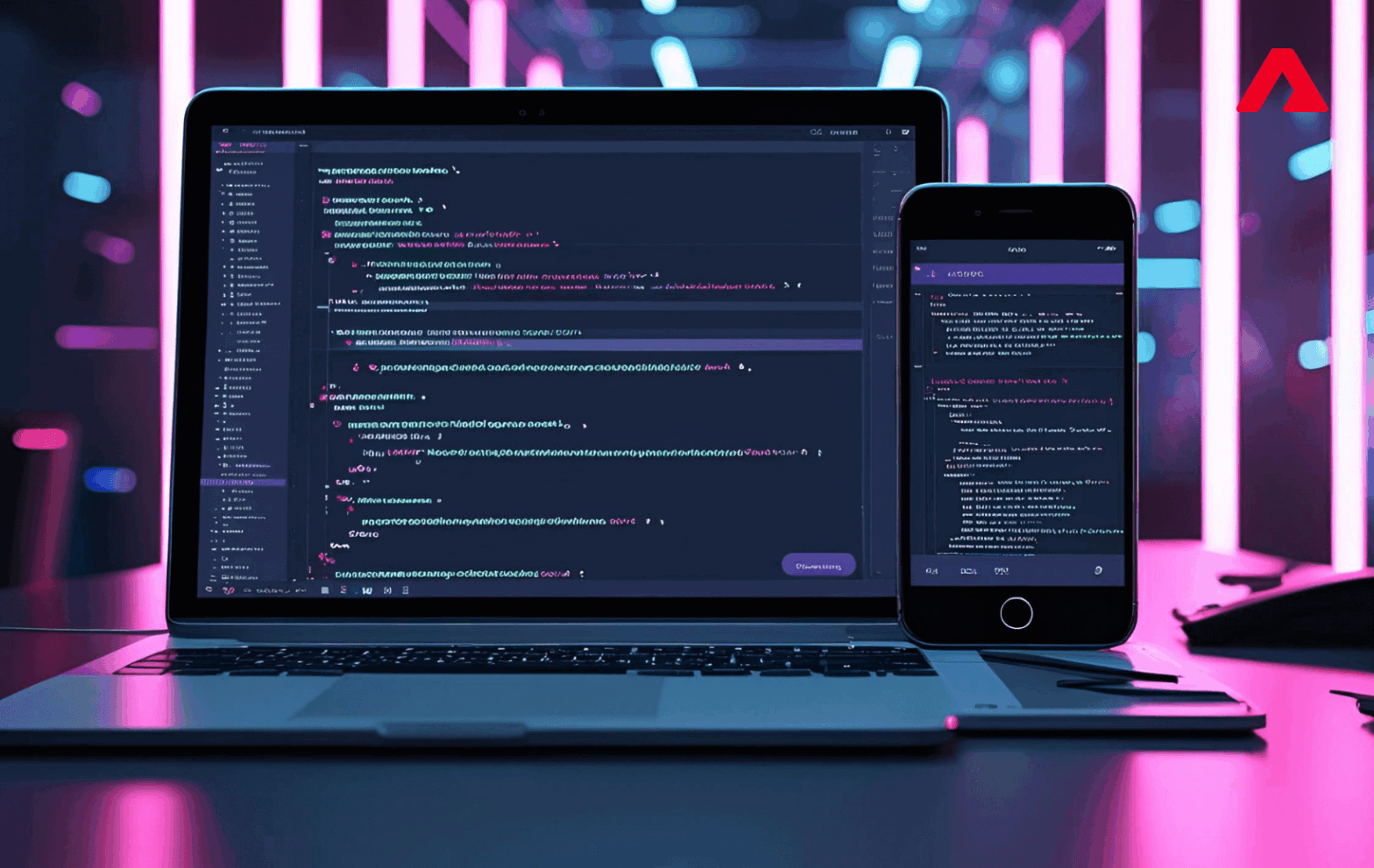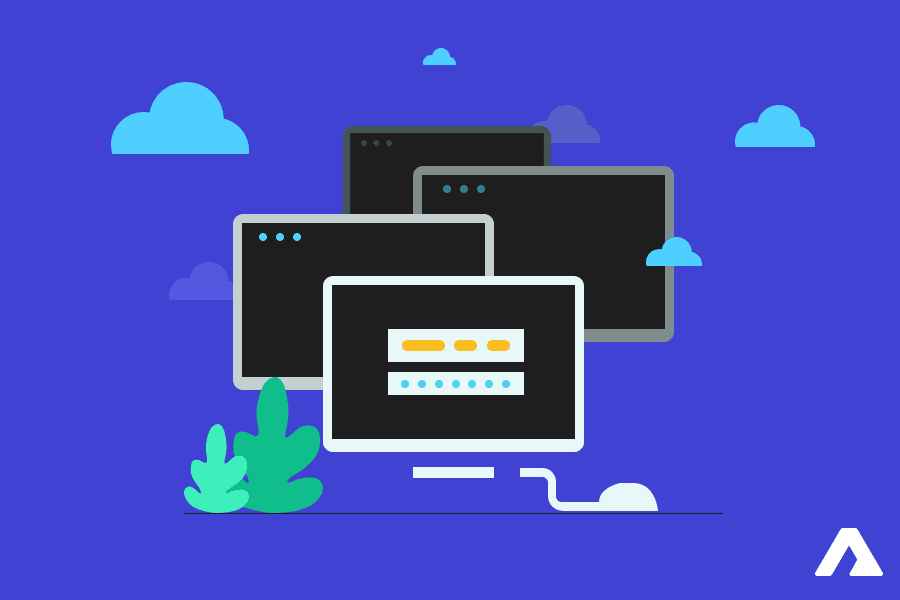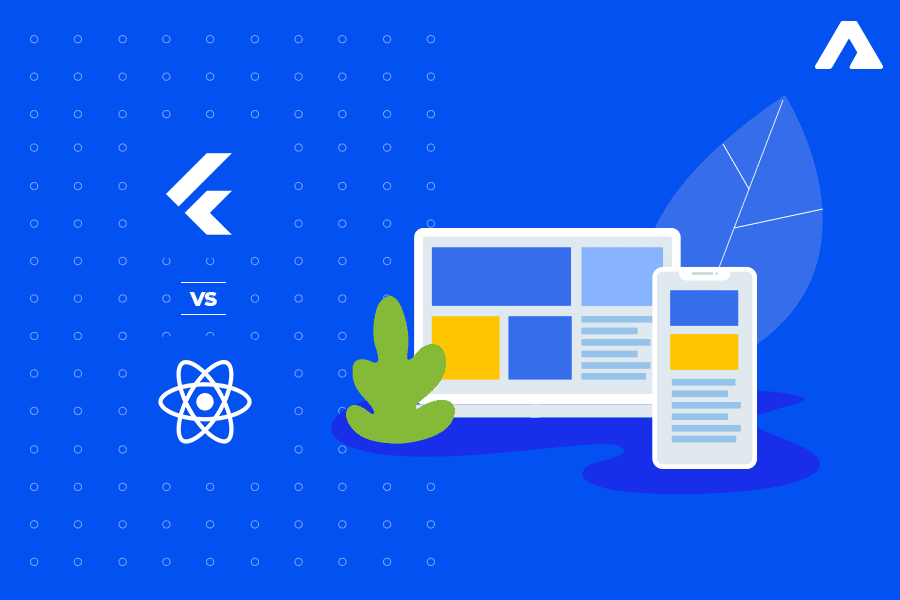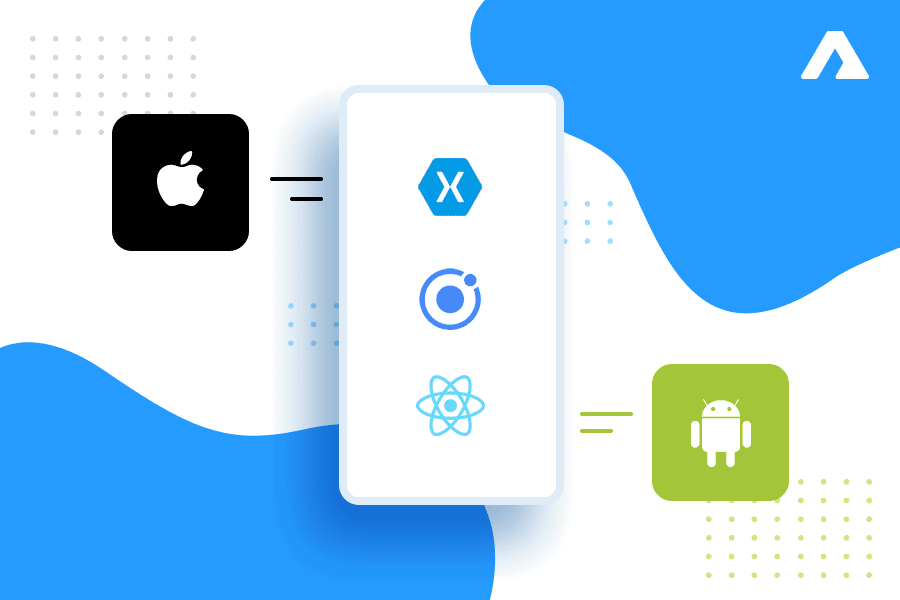React Native was developed by Facebook and Flutter was created by Google. These are two hot cross-platform app development technologies that have been around for a while and are trending.
This article will focus on both of them in detail from a developer’s hindsight. Due to the increasing demand for mobile apps almost every company requires a mobile app to stay competitive and thrive in the market.
Additionally, companies are searching for an option to develop mobile apps specifically for Android and iOS that have faster speed and even lesser resources.
Apple and Google have also offered technologies and native tools to build apps. Android developers utilize Android Studio and Kotlin/Java to build apps while iOS utilizes Xcode and Swift.
This is something that requires developers to learn two different kinds of technologies. Hence, some companies have adopted cross-platform solutions over native solutions to develop apps for both Android and iOS.
Before we deconstruct the technical and business case differences between Flutter and React Native, let’s discuss which is better suited for different cases.
Introducing React Native
This technology can be considered as the mobile development spin-off of Reactjs. It is an open-source backed JavaScript and Facebook-launched library. Both the React and React Native libraries are quite similar.
The primary difference between developing mobile apps and browser-based apps in React Native and React is that in React, virtual DOM is utilized to change browser code in Reactjs.
However, in React native APIs are used to change the components in the mobile. The code blends with a different environment.
The rest of the process is quite similar to each other. An experienced react native developer in React will turn the pattern of props, HOCs, and lifecycle, and render props towards the React Native.
The main rules are similar. Instead of a browser, they will have to learn how to refocus for an iOS or Android environment.
There are many advantages that the similarities between the two libraries provide. There are way more than the react native developers with experience in one library are quickly able to learn the certainties of the other.
The most popular front-end development technology is React at the moment and we will go more into detail about it.
Key React Native Facts
- It is an open-source library built for mobile development launched by Facebook
- It is also the market-leading JavaScript framework/library and the Mobile-specific spin-off from Reactjs,
- Launched in 2015.
- JS native.
Flutter (and Dart)
Flutter is a mobile UI-framework which is also an open-source technology that was originally developed by Google and it also maintains it.
It was launched in 2018 and was purchased out of beta in January 2019. Google has also developed Angular, the market version of the non-mobile development market called ReactJS.
From this point onwards, the similarities between Angular and Flutter end. Both React development and Reactjs are based on JS and are quite similar but Flutter is based on Google’s Dart language.
Dart was launched in 2010 as a substitute to JavaScript created due to the belief in some development circles that there are some issues regarding JS that cannot be solved by the language’s development.
Dart is easier to read and understand than JS and various programming languages due to its syntax being similar to that of a human language. It uses more options but fewer commands.
Developers are allowed to choose their names for variables making the code easier and more understandable to themselves. In the case of the multiple projects that devs work on this detour from standardization needs to be considered carefully.
StackOverFlow has put Dart just behind JavaScript in the list of programming languages that are admired by developers due to its simple syntax. In comparison with the 66.8% for JavaScript, 66.3 loved it.
Dart has crossed JavaScript this year in its convenience with the developers. According to the 2020 survey, Dart is admired by 62.1% of developers to 58.3% for JS.
Flutter app development converts Dart to binary code that matches the scalability of the native performance of Swift, Kotlin, Objective-C, or Java.
Flutter is inspired by the success of React that crossed its Angular framework in popularity. Flutter developer builds its UI based on widgets. Widgets are changed only when it is necessary, generally when their version has been changed that resembles React’s virtual Dom.
Key Flutter Facts
- Flutter was launched and maintained by Google and is an open-source library for mobile development.
- Flutter is based on the Dart language and not JavaScript, unlike Google’s Angular framework.
- Launched in 2018 and taken out of beta in January 2019.
- It is X-Compiled i.e., communicates with mobile devices natively.
- It is a kind of cross-platform technology that is used to build ‘almost native’ Android and iOS mobile apps.
Programming Language

The main advantage of utilizing a cross-platform mobile app development technology is the skill to create apps for both Android and iOS using a single programming language.
1. React Native — JavaScript
React development utilizes JavaScript to develop cross-platform apps. JavaScript is gaining immense popularity in the web community at the moment.
It is generally used with React and other various JavaScript frameworks. A web developer can now build mobile apps with a little training due to this technology.
Keeping this in mind, companies implemented it as a no-brainer. JavaScript is an open-source language where anything can be done.
2. Flutter — Dart
Google introduced Flutter in 2011 that utilizes Dart programming language and is rarely used by developers.
Dart syntax supports most of the object-oriented concepts hence it is quite simple to understand for Java developers or JavaScript. It is simple to begin
Dart because there is easy-to-follow and great documentation available on Dart’s official website.
Analysis
It is easy to implement this framework as JavaScript is popularly used by most web developers. Dart also features an amazing set but it is not used much and is lesser-known in the developer community. Based on this, this framework dominates in terms of programming language.
Technical Specification
It is very important to keep in mind the technical structure of any cross-platform framework for mobile app development.
By understanding the basics of the framework, we can point out a decision and select the one that is the best for the project.
1. Flutter — Skia
It works on the Dart system in which the majority of the elements are inbuilt hence it’s bigger and does not need the medium to interact with the native components.
There are many frameworks in Dart like Cupertino and Material Design that are stuffed inside and provide all the necessary technologies to build mobile apps for the flutter developer.
The Dart framework contains a Skia C++ engine that has every channel, composition, and protocol. This means that Flutter encapsulates everything needed for Flutter app development.
2. Flux – React Native
The architecture of React Native heavily depends on the JS runtime component that is also called JavaScript Bridge. The JavaScript code is converted into the native code during runtime.
Facebook Flux architecture is used in this framework. All in all, it communicates with the native modules using the JavaScript Bridge.
Analysis
Flutter does not always require a bridge to communicate with the inbuilt components as it almost has all the native components in the framework.
React Native on the other hand utilizes JavaScript Bridge to interact with native modules that result in bad performance.
Installation

The configuration stages must be straightforward and simple so that it can be easily understood by the developers that are starting with it.
1. React Native — NPM
You can install the framework of this technology using the Node Package Manager (NPM). Installation of it is easy for those developers that have expertise in JavaScript.
However, other programmers would have to understand the node package system. The node package manager can download packages locally or globally.
The developers will have to locate the binary. We also need a HomeBrew package manager during the downloading of React Native on macOS.
Flutter — File installation from Source
You can install Flutter by installing the file for a particular system from Github. You can load the zip file of flutter and incorporate it as a PATH system.
Flutter needs to better the configuration process by helping package systems such as MacPorts, APT, Homebrew, YUM, etc so that there would be no need for the users to execute additional processes while installation.
Analysis & Result
For a specific OS, both Flutter and React Native lack a one-liner installation with inbuilt package managers.
However, Flutter installation needs extra steps to include the binary to PATH and install it from the source code that might be very helpful for non-JavaScript developers.
You can download it without the struggle of installing the binary from the source and by utilizing the package managers.
Flutter and React Native: Technical performance and quality
Both these technologies are great choices when it comes to the creation of cross-platform apps to perform on both Android and iOS platforms. Both of them are amazing mobile development tools for iOS and Android.
However, how do these two frameworks differ in technical qualities and their weaknesses and strengths? If mobile applications developed in the two different parameters can have variations in performance and other metrics like response time then which one would be better?
Similarities between Flutter and React Native
- Every legendary rivalry first has a lot of things in common. If not then there would not be a healthy competition. React Native and Flutter are no exceptions to that. Before differentiating them we should first look at the similarities that they share on which their rivalry is driven by.
- They are used to develop cross-platform and great-performing apps through just a single code base.
- They do not use the web tools but their native elements and 2D graphics system to form their user interface.
- Apps developed by both these technologies are almost difficult to differentiate as native options.
- Both of them are extremely flexible as they do not have platform-specific design restrictions.
- Both of these frameworks are based on Reactjs technology.
React Native and Flutter – Cross-Platform Mobile Development Systems
The most extreme similarity in these two platforms and the reason why programmers generally select either of them is that both of them are world-class cross-platform app creation tools.
Both these frameworks create applications that work well on both iOS and Android. When it comes to interaction with both the mobile OSs, there are some specifics.
However, almost 90% of similar types of programming codebase are put to use in both the operating systems.
Native Mobile Apps Vs Cross-Platform

Inbuilt apps are programmed to function on a specific operating system. When it comes to the mobile development industry it is divided widely between Android that has 75% of the mobile market or iOS which boasts 24% of these apps.
Inbuilt iOS apps are scripted in Swift or Objective-C languages but native Android apps are crafted in either Kotlin or Java.
Native Mobile Development
The biggest merit of this mobile creation is the ability to use a device’s hardware like GPS and camera. These tools can also be used by cross-platform apps but not without using plugins.
Even if this won’t affect the user experience widely but use of an extra layer aids to the complications. This aids the threat of bugs, glitches, and failures which is not quite performance-centric.
It is also much more convenient to get an approved native app on the App Store and Play Store. Of late, there was a relatively better performance seen by native mobile development.
Most of such gaps have almost been sealed by Flutter and React Native, although there are still many performance edges to native development.
Native Mobile Development advantages
- Bug fixes can be done more conveniently in native applications.
- Hardware features like GPS, camera, etc., are much easier to use.
- As there are many preloaded elements and the code simply means that the native apps provide optimal performance and speed.
- Compared to its alternatives, native apps perform better offline. This is also due to the pre-loaded elements. For instance, native app development will be more suited to a media or online magazine. As once new information is uploaded, there are minimal chances of problems if the visitor is offline in any circumstances like disrupted broadband or no internet at all.
- It’s much easier to approve a native app in any App Store.
Native Mobile Development downside
- You need to develop two apps with new codes and maintain two different operating mobile platforms.
- This distinctiveness between two mobile apps means more money and time to be spent in maintaining and developing them. It leaves you with reduced time to market.
Cross-Platform App Development
React and Flutter are quite close to performing just like their native counterpart. Also, the benefits of these cross-platform apps are far more than its downsides.
This is proven by these mobile apps:
- Gmail
- Google Ads
- Google Stadia
Cross-Platform Development Benefits
- Reusable components –Most of the code files are similar used on both the platforms.
- Less Expensive – you do not have to develop two separate apps that require two different developer’s set of skills.
- Performance – due to the prevalence of Flutter and React Native, there are very few inconsistencies in performance and speed.
- Time to promote – the similarity in coding system in both Android and iOS means that newer apps and releases can be introduced easily and quickly compared to creating two 2 different native options.
Cross-Platform Development Drawbacks
- Offline performance – it is quite tough to create a cross-platform app that works equally well offline also like a native app.
- More difficult development and compilation – it is less time consuming to create a cross-platform app compared to developing two native apps. But it is more time-consuming to create one cross-platform compared to a native app. It should be known that 90% of the shared codebase is adapted for both OS platforms. The other 10% that differs needs to be done perfectly to integrate it into both iOS and Android if there need to be no issues regarding speed and performance.
- Authorization on App Stores – it takes longer for both the app stores to accept a cross-platform app. There also needs to be the authorization of every new update. This takes longer as well hence, it can cost thee app a lot.
Differences between Flutter Vs React Native
Let’s take a look at the attributes that keep these two technologies apart:
Architecture
Mobile applications that are developed via Flutter are known as Cross Compiled apps. It means the language it is written grants them to interact ‘natively’ with both the mobile platforms and also with the hardware of the handheld tools.
The mobile applications developed on React are ‘JavaScript native’. This signifies that it has to interact with a handheld device’s hardware through a passage.
The UI elements created in this platform belong to either Android or iOS systems. However, the underlying hardware’s communication is not ‘native’.
It can harm the working of Flutter vs React Native applications based on more complex apps. It is especially true when a device’s hardware’s communication is of more significance.
React Native Flux architecture utilizes a JavaScript connectivity to locate interaction with the native elements. All required compositions, channels, and protocols are there in Flutter’s Skia C++ engine. They make possible communication with the native elements.
Synopsis
Flutter and React Native are exceptional cross-platform mobile development toolkits. Both of them have their advantages and disadvantages that roughly cancel out each other in a bigger picture.
Based on specifics, Flutter app development is better than React if an application has communication with a mobile device’s underlying hardware.
It is also the perfect toolkit that contains everything needed for mobile application development from the scratch.
It is also quicker and easier to develop as it contains a components library, Material Design principle, and useful widgets.
All product and company names are trademarks™, registered® or copyright© trademarks of their respective holders. Use of them does not imply any affiliation with or endorsement by them.




 Insurance
Insurance










